Battery charge termination test
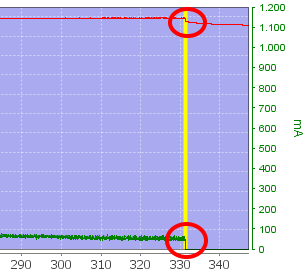
The LiIon charge specifications usual says that they must be charged to 4.20V +/-0.05V with termination at some specific current (Say 50mA), but how much do variation in these parameters affect the charge, i.e. the final capacity?
In this test I will charge the same battery with different charge parameters and then discharge it to check actual charged capacity.
To do this test I charged with voltages between 4.00 and 4.30 volt and termination currents between 10mA and 400mA, for a total of 7 different voltages and 6 currents. This many tests will put some wear on the battery for this reason both the first voltage and the last voltage is 4.20V, this brings the total number of tests to 48. All tests have been done with low voltage and low termination current first, then increasing current and high voltage last, i.e. the 4.30V run was the second last (The final run was the second 4.20V).
Two year old 18650 cell
For the first test I uses one of my old test cells: The Panasonic NCR18650A, i.e. a 3100mAh cell that has been used a lot.
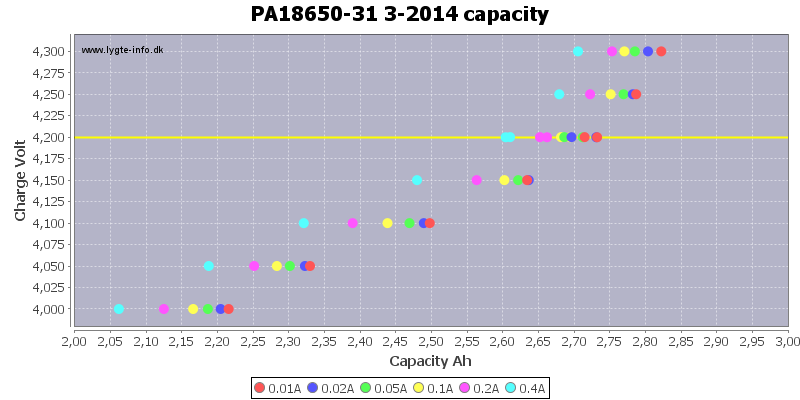
This curve shows the charge parameters and the charged capacity.
Letís first look at the 4.20V line (The yellow line). The color of the dots shows the termination current, there is two of each dot: one for the first run and one for the last run. These two sets of dots shows that I lost around 13mAh during the 48 test runs.
Capacity depending on charge voltage:
4.15V with 100mA termination gives 2602mAh or 90mAh less.
4.20V with 100mA termination gives 2694mAh/2681mAh, I use the first value as reference
4.25V with 100mA termination gives 2751mAh or 60mAh more.
The termination current will also affect the final result, at 4.2V we get:
10mA termination gives 2732mAh capacity or 40mAh more.
100mA termination gives 2694mAh capacity is used as reference.
400mA termination gives 2604mAh capacity or 90mAh less.
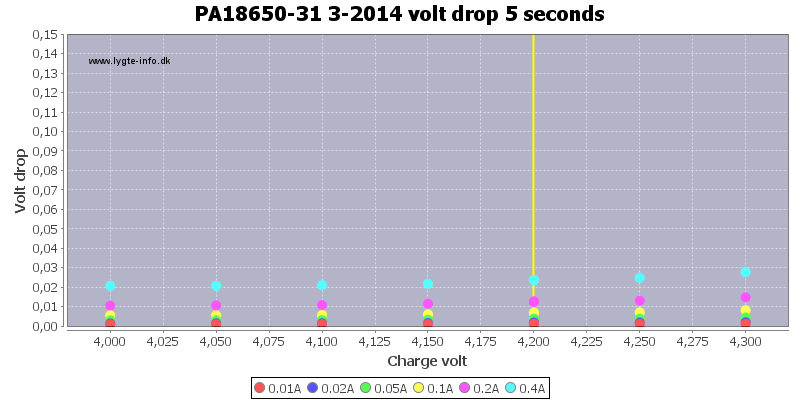
Measuring voltage after the charger has stopped will not show the charge voltage, but something lower. This chart here shows how much lower the voltage has dropped 5 second after the charger stopped. As can be seen it is depend on what current the charger terminates at (This is not surprising).
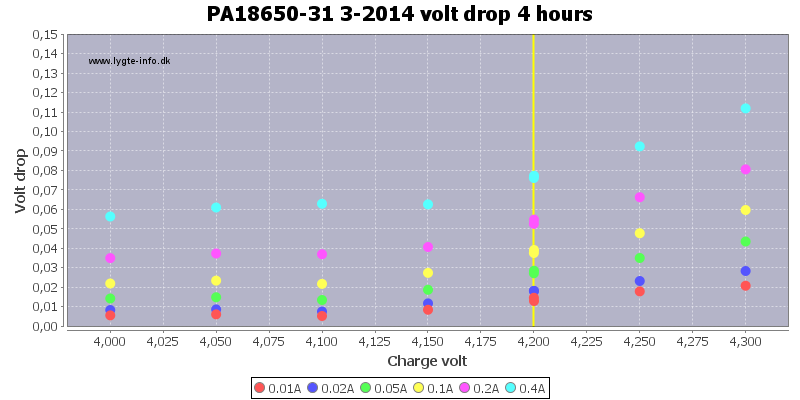
The voltage will drop some more over time, due to the many curves I had to do, I only waited 4 hours before measuring again. After this time both the termination current and the charge voltage will affect how much the voltage drops. Higher charge voltage will drop a bit more.
If a voltmeter shows 4.16 volt (4.20 with 0.04V drop) on this cell (After the 4 hours), the charger may have charged with 4.20V and 100mA termination current (Yellow dot).
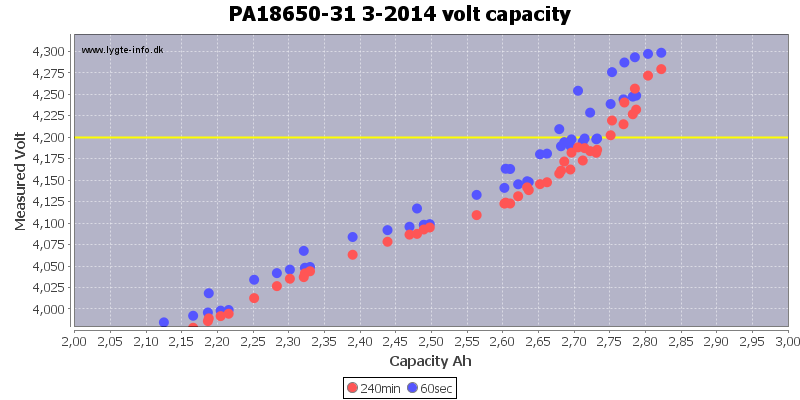
How well do voltage reflect capacity in a LiIon cell? Usual very well, but you have to wait until the voltage has dropped. The blue dots (60 seconds after charge termination) are not very close to a line, with the red dots (4 hours after charge termination) the dots are much closer to a line, but not perfect.
New high current 18650 cell
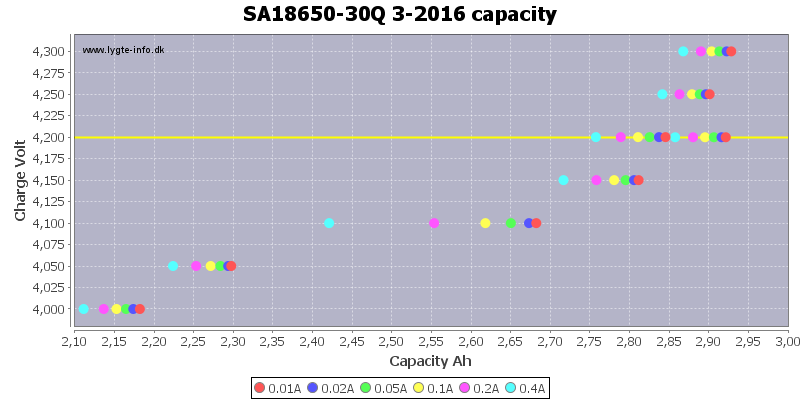
This cell is much more sensitive to usage, it lost 85mAh during the testing.
Capacity depending on charge voltage:
4.15V with 100mA termination gives 2780mAh or up to 115mAh less.
4.20V with 100mA termination gives 2895mAh/2810mAh
4.25V with 100mA termination gives 2878mAh probably 30mAh-60mAh more.
The termination current will also affect the final result, but not very much, at 4.2V we get:
10mA termination gives 2921mAh capacity or 26mAh more.
100mA termination gives 2895mAh capacity is used as reference.
400mA termination gives 2857mAh capacity or 38mA less.
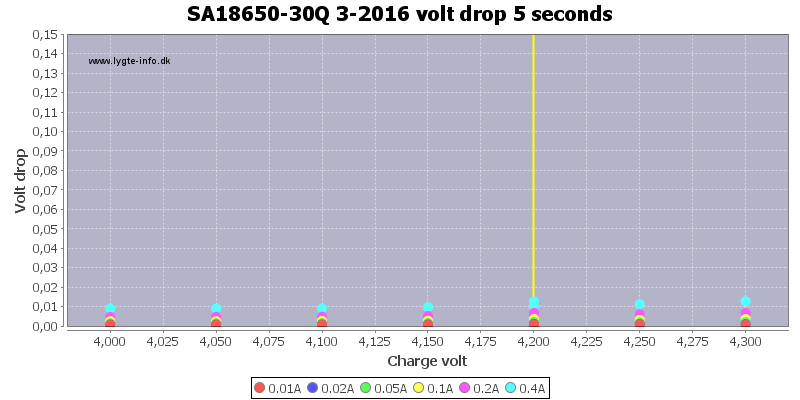
It takes some time before the voltage drops on this cell.
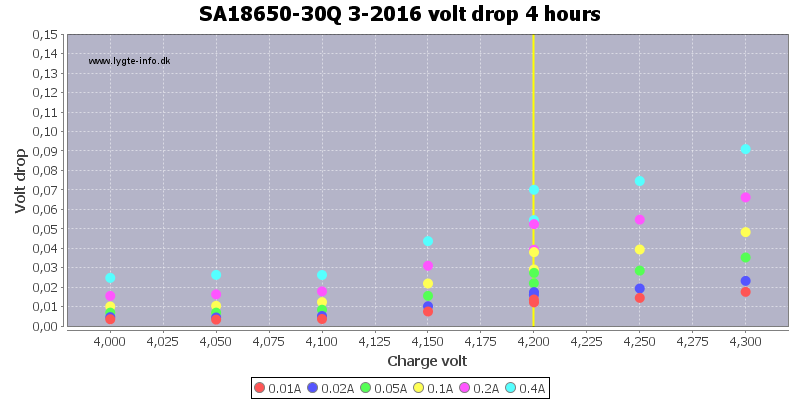
After 4 hours the voltage drop is about the same as for the old cell.
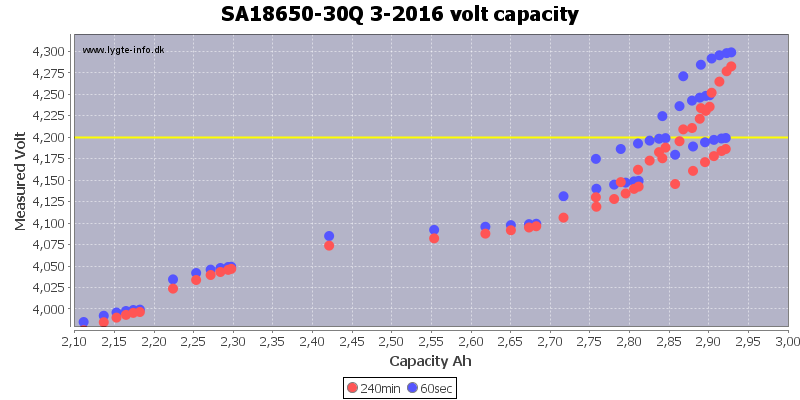
A slightly used 16340 cell
This cell has considerable lower capacity than 18650 cells and the 400mA termination is a very significant part of the capacity.
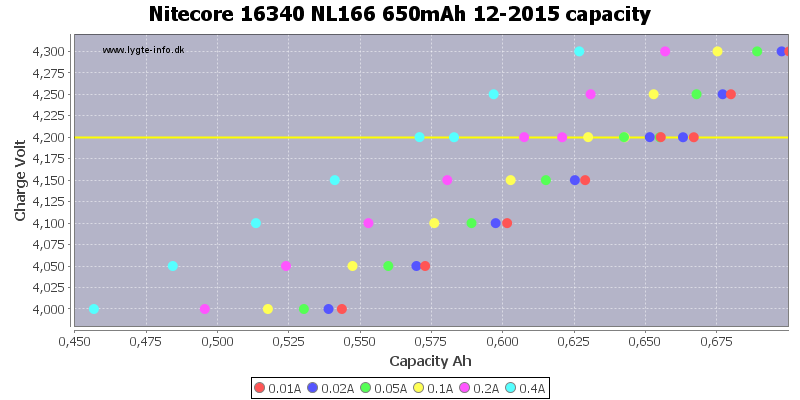
Some chargers do not lower termination current when charging small cells, how significant is this?
Capacity depending on charge voltage:
4.15V with 100mA termination gives 602mAh or up to 40mAh less.
4.20V with 100mA termination gives 642mAh/629mAh
4.25V with 100mA termination gives 652mAh probably 10mAh-20mAh more.
The termination current will also affect the final result, not very much in mAh, but significant compared to the total capacity, at 4.2V we get:
10mA termination gives 666mAh capacity or 24mAh more
100mA termination gives 642mAh capacity is used as reference.
400mA termination gives 582mAh capacity or 54mA less.
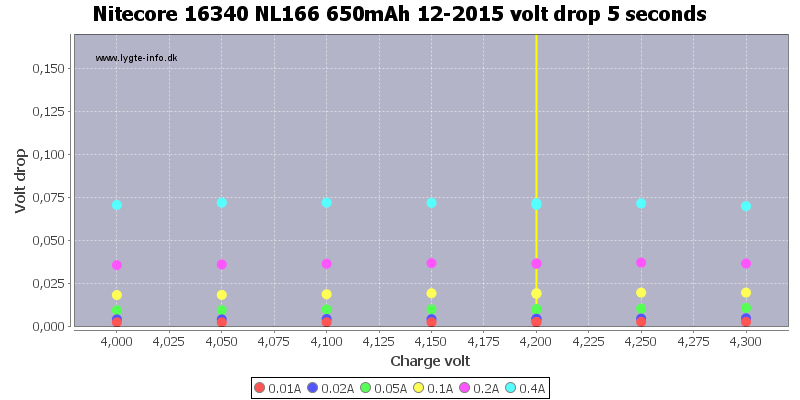
The high termination current gives a large voltage drop on this small cell.

After 4 hours the high termination currents has a very significant voltage drop.
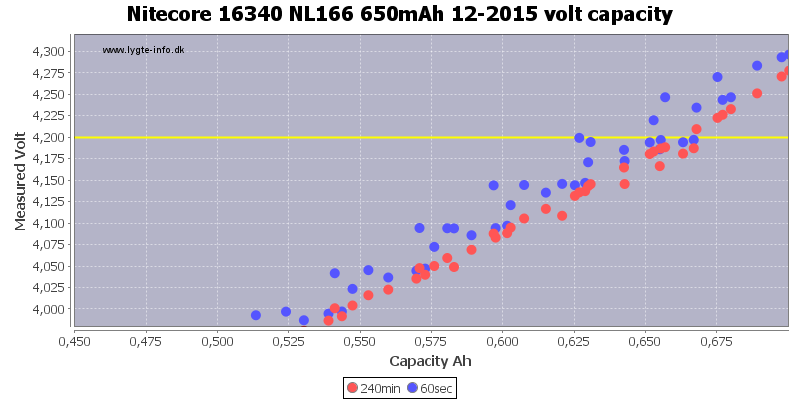
The 4 hour curve is close to a line, i.e. the voltage is mostly settled here.
Conclusion
Generally I expect 18650 chargers to use a termination current in the 50mA to 100mA range, this usual match the datasheets for the cells, as can be seen here it do not make a charger unusable if it uses a higher termination current, but the capacity of the cell will be lower.
For smaller cells it is best with a termination current below 50mA to get the most capacity.
Another detail: If a voltmeter shows 4.20V on a cell a few hours after it has been charged, the charger is over charging the cell (It is nothing serious), all cells will drop in voltage.
Notes
My test lab do not have air-condition, this means the temperature can vary a bit. This may have affected the result slightly.
I uses Ah, to get mAh just move the decimal point 3 places. I.e. 2.9Ah is 2900mAh
All discharges where at 1A down to 2.8V
My charger do not charge LiIon to 4.2V, is it faulty?
Estimating remaning capacity in LiIon batteries












